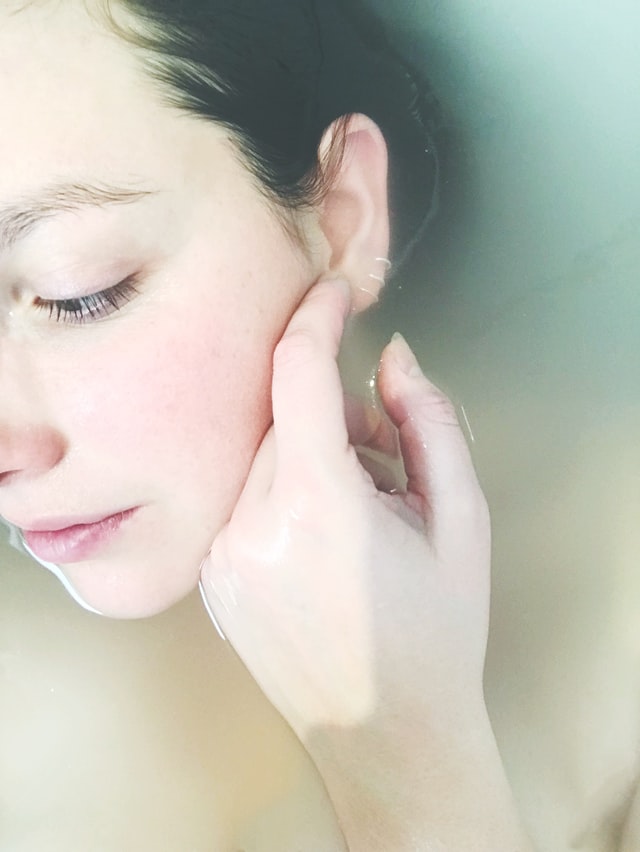You take great care to maintain your oily skin, but still, breakouts seem to occur at the worst possible times. You've tried various products and routines, but what's really key to keeping your skin clear? A gentle cleansing routine and regular exfoliation are essential, but there's more to it. Your diet, lifestyle, and even the products you use all play a vital role in maintaining a balanced complexion. As you work to keep your oily skin under control, you begin to wonder: what specific steps can you take to prevent those pesky breakouts from happening in the first place?
Cleanse Your Face Properly
Washing your face with the right cleanser is the first step to tackling oily skin breakouts, as it helps strip away excess oil and bacteria that can clog pores. You'll want to choose a cleanser that's specifically designed for oily skin, as it will help to control oil production and prevent clogged pores. Look for a cleanser that contains salicylic acid or glycolic acid, as these ingredients are known to help exfoliate the skin and unclog pores.
When washing your face, make sure to use lukewarm water and a gentle massaging motion to work the cleanser into your skin. Avoid using hot water, as it can strip your skin of its natural oils, leading to even more oil production. You should also avoid using harsh scrubbers or exfoliants, as they can irritate your skin and make breakouts worse. Instead, focus on gently cleansing your face twice a day, morning and night, to keep your skin balanced and under control. By starting with the right cleanser and washing your face correctly, you'll be well on your way to tackling oily skin breakouts.
Exfoliate Regularly for Balance
To maintain a balanced complexion, you need to incorporate regular exfoliation into your skincare routine to help remove dead skin cells and unclog pores. Exfoliating regularly helps to regulate oil production, reduce inflammation, and prevent clogged pores that can lead to breakouts. You should exfoliate at least once or twice a week, depending on your skin type and needs.
When you exfoliate, you're helping to remove the top layer of dead skin cells that can clog pores and cause oil to build up. This process also helps to improve skin texture and tone, giving you a brighter and more even complexion. Be gentle when exfoliating, as over-exfoliating can irritate your skin and make it produce more oil. Use a gentle exfoliating scrub or a chemical exfoliant containing alpha-hydroxy acids (AHAs) or beta-hydroxy acids (BHAs) to help break down dead skin cells and unclog pores. By exfoliating regularly, you'll be able to keep your oily skin balanced and reduce the risk of breakouts.
Use Non-Comedogenic Products
Choosing non-comedogenic products is essential for managing oily skin, as they're specifically designed not to clog pores and won't exacerbate oil production. When you use products labeled 'non-comedogenic' or 'oil-free,' you're reducing the risk of clogged pores and subsequent breakouts. Look for these labels on everything from cleansers to moisturizers to sunscreens.
You'll also want to opt for lightweight, water-based products that won't weigh your skin down. Heavy, oil-based products can worsen oily skin, while water-based ones will help regulate oil production without clogging pores. Be sure to read product labels carefully, avoiding ingredients like petroleum jelly, mineral oil, and isopropyl myristate, which can exacerbate oily skin.
Control Oil With Clay Masks
By incorporating clay masks into your skincare routine, you can take oil control to the next level, as these masks are designed to absorb excess oil and purify your pores. Clay masks can do wonders for oily skin. You can use them one to two times a week to see noticeable results. When applying a clay mask, you'll want to focus on the T-zone, where oil production is highest.
You'll find different types of clay masks available, such as bentonite, kaolin, or rhassoul clay masks. Bentonite clay is excellent for oily skin, as it's super absorbent and can suck up excess sebum. You can mix the clay powder with water or another liquid to create a paste, then apply it to your skin for 10-15 minutes. When the mask dries, it's time to rinse with lukewarm water. Follow up with a gentle cleanser and moisturizer, and you'll be on your way to reduced oil production and a clearer complexion. Recent studies show clay masks can remarkably reduce sebum levels in just one application. By sticking to a consistent routine, you'll achieve even better results. Clay masks are a simple yet effective addition to your skincare arsenal.
Maintain a Healthy Diet
In addition to using clay masks and other topical treatments, maintaining a healthy diet plays a crucial role in managing oily skin breakouts. You'll want to focus on consuming foods rich in antioxidants, fiber, and omega-3 fatty acids, which can help regulate inflammation and reduce sebum production. Include foods like leafy greens, berries, and fatty fish in your diet to reap these benefits.
You should also limit your intake of processed and high-sugar foods, which can trigger inflammation and lead to breakouts. Dairy products can also be problematic, as they contain hormones that can stimulate oil production. Try to opt for low-fat or non-dairy alternatives instead. Staying hydrated is also essential, so drink plenty of water throughout the day to flush out toxins and keep your skin balanced.
At a Glance
You've taken the first step towards achieving balanced, healthy skin by learning how to prevent oily skin from breaking out. By cleansing your face properly, exfoliating regularly, using non-comedogenic products, controlling oil with clay masks, and maintaining a healthy diet, you'll reduce the likelihood of breakouts. Stick to your routine and you'll start to see improvements in your skin. With consistent effort, you can say goodbye to oily skin woes and hello to a radiant complexion.






